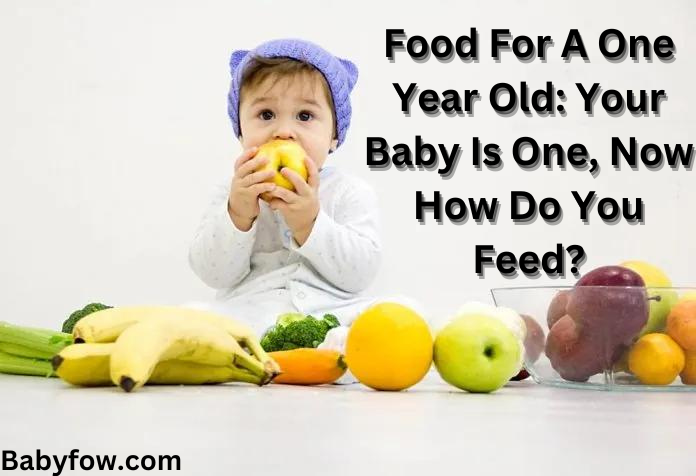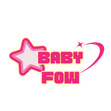Congratulations, your little one has reached a major milestone – their first birthday! 🎂 As you celebrate this special occasion, you may find yourself wondering about the best foods for one year olds. What should you be feeding your growing child to ensure they get the proper nutrition for one year olds? Don’t worry, we’ve got you covered with this comprehensive guide on what one year olds eat and the best food for 12 month old babies.

Table of Contents
What Can 1 Year Olds Eat?
At this age, your child is ready to explore a variety of foods 1 year olds can eat. Their diet should consist of a balanced mix of:
- Fruits 🍎
- Vegetables 🥦
- Whole grains 🌾
- Lean proteins 🍗
- Dairy products 🥛
When introducing new foods for one year olds to eat, it’s important to do so gradually and watch for any signs of allergies. Some great options for healthy foods for 1 year olds include:
- Soft, cooked vegetables like carrots, peas, and sweet potatoes
- Ripe, soft fruits like bananas, peaches, and avocados
- Whole grain cereals, bread, and pasta
- Scrambled eggs, tofu, and finely chopped meats
- Yogurt, cheese, and milk

Portion Sizes and Feeding Frequency
Now that you know what 1 year olds eat, let’s talk about how much and how often they should be eating. At this age, your child’s portion sizes for 12 month old should be about 1/4 to 1/2 of an adult serving size. They should be eating three meals a day, along with two to three snacks. Here’s a sample meal plan for a one year old:
| Meal | Food |
|---|---|
| Breakfast | 1/2 cup of whole grain cereal with milk and 1/2 banana, sliced |
| Snack | 1/4 cup of soft, cooked vegetables |
| Lunch | 1/2 sandwich with mashed avocado and 1/4 cup of finely chopped chicken |
| Snack | 1/4 cup of yogurt with 1/4 cup of soft, diced fruit |
| Dinner | 1/4 cup of cooked pasta with 1/4 cup of tomato sauce and 1/4 cup of cooked, finely chopped vegetables |
Remember, every child is different, so how much do one year olds eat may vary. Trust your child’s hunger and fullness cues, and don’t force them to eat more than they want.
Finger Foods for One Year Olds
As your child develops their fine motor skills, they’ll love exploring finger foods for one year olds. These bite-sized morsels are perfect for little hands to grasp and can make mealtime more fun and engaging. Some great options include:
- Soft, diced fruits like melon, kiwi, and strawberries
- Cooked, cut-up vegetables like broccoli, cauliflower, and zucchini
- Small pieces of cheese or tofu
- Whole grain crackers or toast cut into small pieces
- Soft, cooked pasta shapes
When offering finger foods for 12 month olds, make sure they’re cut into small, manageable pieces to prevent choking. Always supervise your child during mealtime and encourage them to eat slowly and chew thoroughly.

Healthy Snacks for One Year Olds
In addition to three main meals, your one year old will likely need a couple of snacks throughout the day to keep their energy levels up. When choosing snacks for 1 year olds, opt for nutrient-dense options that will keep them satisfied until the next meal. Some ideas include:
- Sliced apple or pear with almond butter
- Whole grain crackers with hummus or guacamole
- Hard-boiled egg, sliced or quartered
- Yogurt with fresh berries
- Homemade smoothies with fruits, vegetables, and yogurt or milk
Remember, snacks should be a complement to main meals, not a replacement. Keep snack portions small and try to offer them at least an hour before the next meal to avoid spoiling your child’s appetite.
Drinks for One Year Olds
In addition to solid foods, it’s important to make sure your one year old is getting enough fluids throughout the day. Water and milk should be the primary drinks offered, with juice limited to no more than 4 ounces per day. Here are some guidelines for drinks for 1 year olds:
- Offer whole milk (unless otherwise directed by your pediatrician) at meals and snacks, aiming for about 2-3 cups per day
- Encourage your child to drink water throughout the day, especially between meals
- Limit juice intake and always dilute it with water to reduce sugar content
- Avoid sugary drinks like soda, sports drinks, and sweetened tea
READ MORE :
When do you start showing in pregnancy in 2024.
Foods to Avoid for One Year Olds
While your one year old is ready to explore a wide variety of foods, there are still some items that should be avoided due to choking hazards or potential allergic reactions. These include:
- Whole grapes, cherry tomatoes, and large pieces of fruit
- Hard candies, nuts, and popcorn
- Raw vegetables like carrots and celery
- Sticky foods like peanut butter and marshmallows
- Honey (due to the risk of botulism)
- Cow’s milk as a primary drink (stick to whole milk or formula)
If you’re unsure about a particular food, always err on the side of caution and consult with your pediatrician.

Tips for Feeding Your One Year Old
Feeding a one year old can be both exciting and challenging. Here are some tips to make mealtime a positive experience:
- Let your child explore their food and feed themselves whenever possible. This helps develop their fine motor skills and encourages independence.
- Make mealtime fun by offering a variety of colors, textures, and shapes on their plate.
- Don’t stress over picky eating. It’s normal for toddlers to have food preferences and go through phases of refusing certain foods.
- Set a good example by eating a variety of healthy foods yourself. Your child is more likely to try new foods if they see you enjoying them.
- Avoid distractions like TV or toys during mealtime. This allows your child to focus on eating and helps prevent overeating.
- Encourage your child to listen to their hunger and fullness cues. Don’t force them to clean their plate if they’re no longer hungry.
- Be patient and keep offering new foods, even if they’re rejected at first. It can take multiple exposures before a child accepts a new food.
FAQ :
What foods can my 1 year old eat?
At 1 year old, your child is transitioning from milk-based meals to a more varied diet. They can now enjoy a wide range of nutritious foods, including:
- Fruits and Vegetables: Offer a colorful variety in chopped or mashed forms. Steamed or roasted vegetables are great options, as well as ripe fruits like bananas, berries, and melons.
- Grains: Opt for whole-grain cereals, toast strips, or small pasta shapes.
- Protein: Introduce cooked and chopped meats like chicken or fish, mashed beans, or tofu.
- Dairy: Breastmilk or formula can still be a part of their diet, but you can also introduce whole milk yogurt and small amounts of cheese.
Good finger foods for a 1-year-old:
Finger foods are a great way to encourage self-feeding and develop your child’s fine motor skills. Here are some safe and healthy options:
- Cut-up fruits and vegetables: Aim for soft or well-cooked options like steamed broccoli florets, banana slices, or avocado wedges.
- Small whole-grain crackers or toast soldiers spread with mashed avocado or nut butter (check for allergies first!).
- Scrambled eggs or omelet strips
- Small cooked pasta shapes
- Cottage cheese or yogurt
How many meals and snacks for a 1-year-old?
A general guideline is to offer 3 meals and 2 snacks a day for a 1-year-old. However, their individual needs may vary. Pay attention to your child’s hunger cues and adjust portion sizes accordingly.
What can a 1-year-old not eat?
There are certain foods that pose a choking hazard for young children. Avoid giving them:
- Whole nuts and nut chunks (but nut butter is okay if there’s no allergy)
- Hard candies or popcorn
- Grapes or cherry tomatoes (cut them into quarters or eighths)
- Honey (wait until after age 1)
- Unpasteurized milk or cheese
Conclusion
Feeding your one year old a balanced, nutritious diet is essential for their growth and development. By offering a variety of healthy food for 1 year olds, paying attention to portion sizes, and following your child’s hunger cues, you can ensure they’re getting the nourishment they need. Remember, every child is unique, so don’t compare your little one’s eating habits to others. Trust your instincts, and enjoy this exciting new stage in your child’s life! With a little patience and creativity, mealtime can be a fun and enjoyable experience for both you and your growing toddler. 😊








Pingback: 250+ Beautiful Girl Names In 2024. - Babyfow.com
Thanks for sharing. I read many of your blog posts, cool, your blog is very good.
I don’t think the title of your article matches the content lol. Just kidding, mainly because I had some doubts after reading the article.
Your point of view caught my eye and was very interesting. Thanks. I have a question for you.